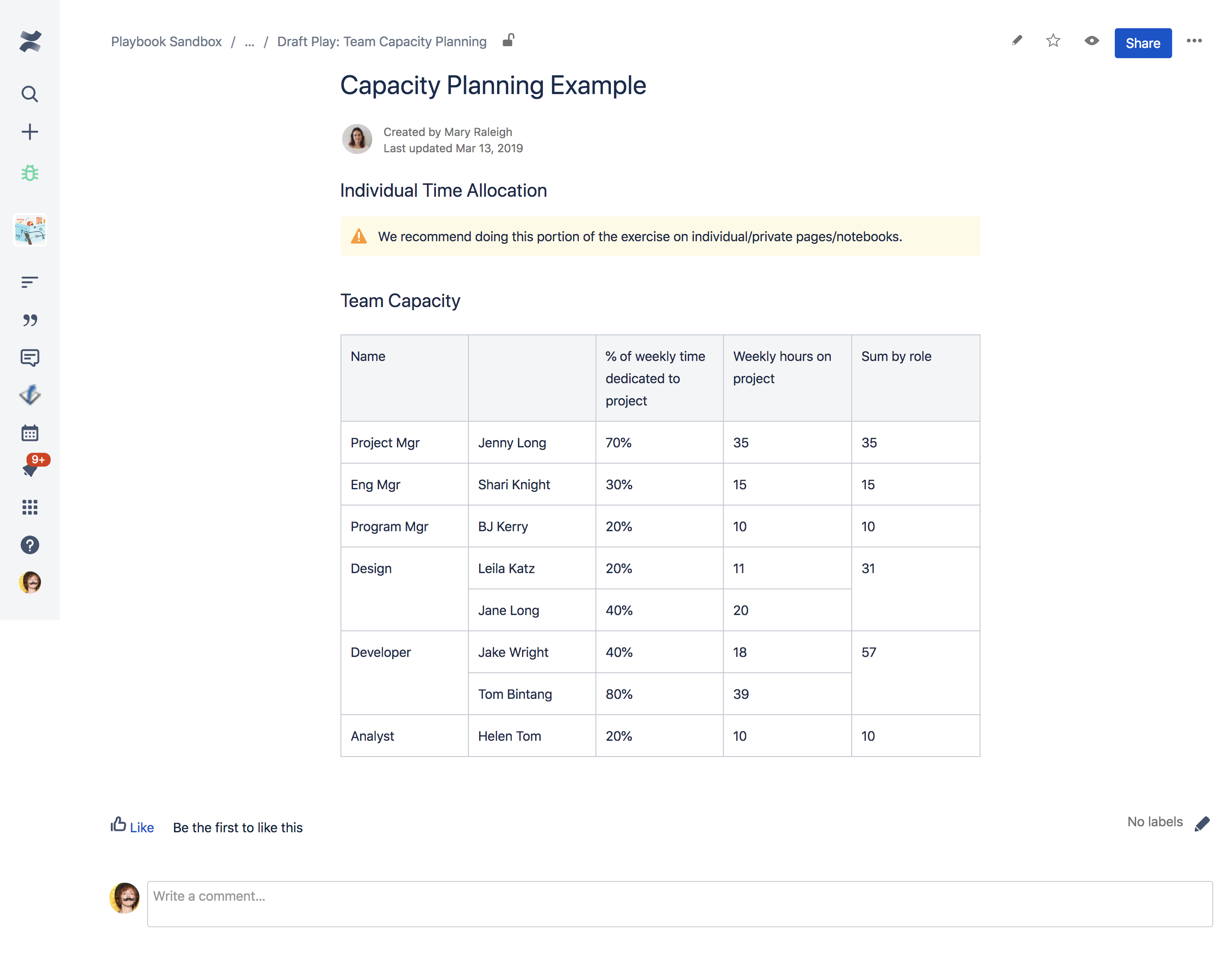
人员
3 - 8

时间
30 分钟

难度
简单易用
使用此技巧
会议之前,请所有人观察并考虑写下他们每周的正式和非正式活动。这将有助于提高准确性并加快活动的第一部分。
材料
白板或牛皮纸
记号笔
钢笔
记事本
计时器
第 1 步
搭建舞台(5 分钟)
引入这项练习是改善团队整体运行状况的一种方式,这样团队就可以放心如实地报告每周的工作时间和空闲时间。分享将如何使用本练习的结果,例如,Atlassian 的许多团队都会在每两周的冲刺规划中回顾和更新他们的个人能力。在会议室里展开调查(如果是和团队一起做的话),问他们你们开会是要分析什么问题。将所有回复写在白板上。
准备好接受在这里讨论的答案中包含的有意和无意的偏见。确保参与讨论的人不试图避开令人不安的事实或设法达成简单共识。
如果没有一个明确的问题,您需要就要解决哪个问题达成共识——这本身应该就很有启发性!达成一致后,在白板上写下简洁的问题陈述。
第 2 步
为每个人安排一周的典型工作量(5 分钟)
要求每个人独立写下他们在典型的一周中做的所有事情,并估计花在上面的时间,以每周小时数表示。查看您的日历、电子邮件收件箱、Jira 请求单和聊天频道,确保没有遗漏。
然后,通过将每周在该项目上花费的小时数除以每周总时数来计算他们在该项目上花费的时间百分比。

专业提示
确保将花在错误修复、事件响应、管理任务、定期会议、喝咖啡、计划外的走廊聊天、一对一等方面花费的时间包括在内,并确保将花在不同项目上的时间分开。
第 3 步
总结在这个项目上花了多少时间(15 分钟)
在表格中总结团队的能力。首先将所有担任相同角色的人分组。对于每个角色,连续记录每个人,并包括他们每周在此项目上花费的总时长。记录了所有担任相同角色的人员后,将该角色的可用时数相加。
重复此操作,直到您在表格中记录了所有角色和团队成员。

例如...
您的能力计划表应如下所示。(但如果不是,您知道的...我们不做评论。)
第 4 步
商定后续步骤(5 分钟)
既然您已经有了能力基线,那么您会多久审查一次团队分配?是否有责任没有负责人?我们建议您使用本次会议的结果来指导您对团队未来项目的估算和优先级排序练习。
搞定了?
请务必与您的团队共同运行一次完整的状况监控会话或检查点,从而验证是否有所改善。
想要更多手册?
请将您的电子邮件发送到下方,以便在我们添加新的状况监控和剧本时收到通知。
得到反馈吗?
在 Atlassian 社区网站上提问或发表评论。
